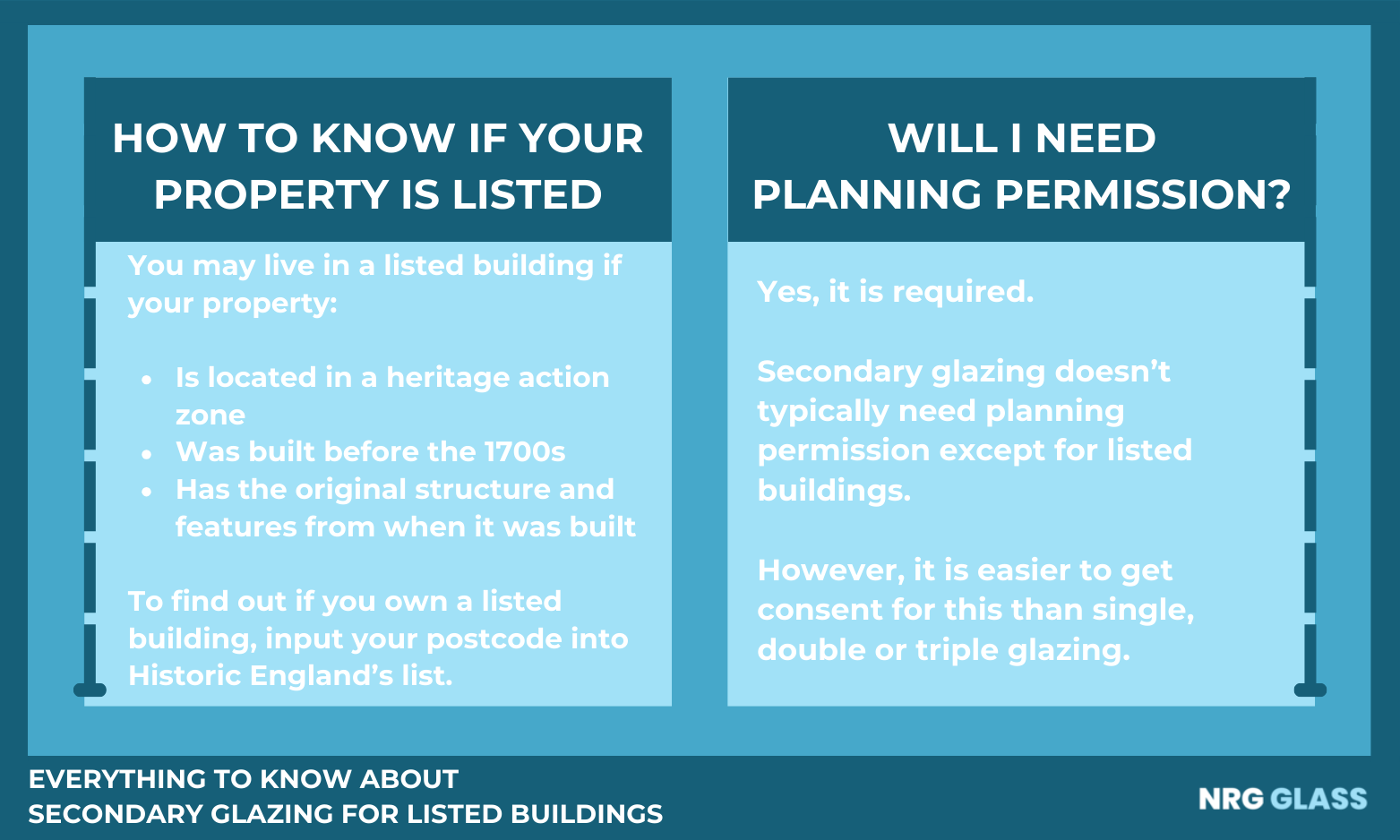Everything to Know About Secondary Glazing for Listed Buildings
Posted on 22nd April 2024 at 09:37
Is your property getting colder and colder as the years go by? That could be because you have the wrong windows! But we understand the attachment you have to your listed buildings' original windows. So, instead of replacing them, consider secondary glazing.
In this article, we’ll cover:
How to know if your property is listed
The benefits of secondary glazing in listed buildings
Secondary glazing listed building consent
And the best secondary glazing for listed buildings

How to Know if Your Property Is Listed
Anyone can apply for a building to be listed, which simply means it’s harder to get planning permission for any alterations.
Only 2.5% of listed buildings are grade I, 5.8% grade II and 91.7% grade III. The third is the most likely grade for a homeowner, though. In total, at least 500,000 properties are listed in the UK.
You may live in a listed building if your property is located in a heritage action zone or was built before the 1700s. The more original your structure is, the more likely it is to be listed.
To find out if you own a listed building, input your postcode into Historic England’s list.
The Benefits of Secondary Glazing in Listed Buildings
There are multiple benefits of secondary glazing in listed buildings and general properties too, such as:
Banished Condensation:
At least 15% of homes are affected by mould, often caused by condensation, which is extra moisture caused by humid air and cold temperatures.
Many listed buildings will have their original single glazed windows, but this is where condensation most thrives. However, getting planning permission is difficult as replacing windows in a listed building can ruin the integrity of it.
In this case, you should opt for our secondary glazing. It’s easier to get consent as it works alongside your existing windows, preserving them instead of changing. It will also keep some of the condensation at bay by retaining heat.
Enhanced Soundproofing:
Noise pollution affects everyone, but especially those living in urban areas. At least one in five people are exposed to harmful, long-term noise that can cause:
Affect childrens’ ability to learn
Cardiovascular issues
Deceased mood
Metabolic issues
Reduced sleep
Be it an aeroplane, train, cars honking or some rowdy teenages outside, our secondary glazing can improve your soundproofing by 75%.
Ultimate Insulation:
Secondary Glazing Listed Building Consent
Replacing windows in a listed building can be difficult because it’s difficult to get consent, so we don’t recommend single, double or triple glazing.
However, secondary glazing listed building consent is still required. It’s typically not necessary for normal buildings, though.
To see if you require planning permission and to apply for it, you need to contact your local council.

Best Secondary Glazing for Listed Buildings
The best secondary glazing for listed buildings will blend in with your design and the original windows, and won’t damage property.
We recommend windows that improve your insulation and soundproofing while saving money on your energy bills.
Our bespoke secondary glazing is suitable for a variety of listed buildings, whether you live in a cottage or work in an old apartment building. From horizontal to vertical sliders, hinged casements to lift-out windows, we have the perfect option for you.
Secondary Glazing for Listed Buildings at NRG Glass
Invest in our durable and energy-efficient secondary glazing and reduce the detrimental effects of condensation. Our windows are made-to-measure with a focus on your property’s theme.
To learn more about our manufacturing and installation process, contact us today. Additionally, visit our listed buildings page and secondary glazing guide to learn more about our products.
Tagged as: Listed Buildings, Secondary Glazing
Share this post:

